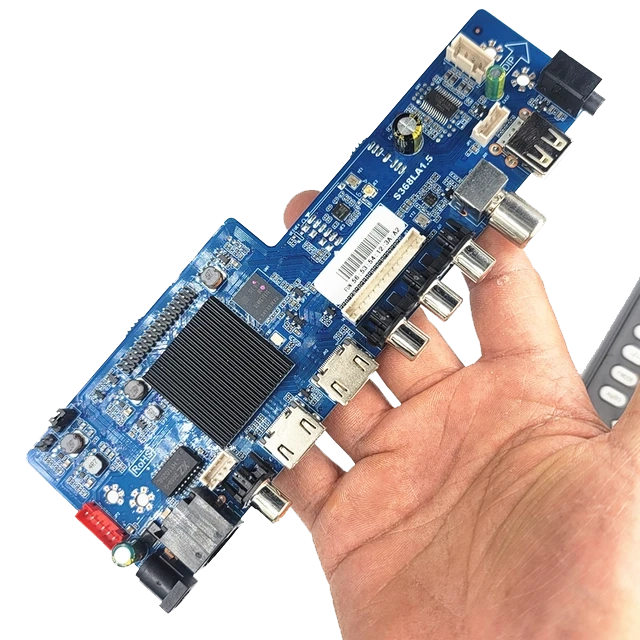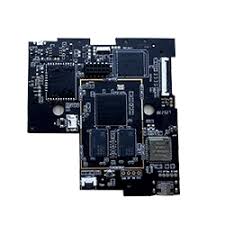
Begin your exploration the territory of Android platform coding for single-chip computers. This exhaustive guide will arm you with the primary ideas and practical steps to competently create your own Android-integrated SBC ventures. From grasping foundational ideas of Android software engineering to traversing detailed world of SBC equipment, this guide will support your a productive programming journey.
- Uncover the diverse of available SBC systems and their individual capabilities.
- Perfect essential Android technology stacks, including Android Studio, SDKs, and emulators.
- Become familiar with the intricacies of tuning your SBC infrastructure for seamless Android performance.
Scrutinize best practices for engineering robust and reliable Android apps tailored for SBC hardware constraints.
Engineering Android Programs for SBC Devices
Utilizing potential of a Single Board Computer (SBC) for Android application engineering is an increasingly prevailing approach. These compact and versatile devices provide a cost-effective space for prototyping, enabling coders to harness the capabilities of Android without the need for a traditional machine. By leveraging the SBC's resources such as its processor, memory, and connectivity options, developers can create Android applications that range from simple utilities to more complex software. The potential to customize the hardware and software environment further enhances the flexibility of SBCs for Android development, making them a useful tool for both developers.
Utilizing Android SBCs in Connected Devices
For budding developers delving into the world of Internet of Things (IoT), Android dev boards present a attractive platform to bring their pioneering ideas to life. These handy boards, often equipped with comprehensive hardware and straightforward software development kits (SDKs), provide a trustworthy foundation for launching a wide range of IoT tools. From home automation systems to environmental monitoring platforms, Android dev boards empower groups to engineer cutting-edge IoT projects with agility.
- Capitalizing on the extensive Android ecosystem, developers can connect with a vast library of modules specifically designed for IoT services. This array of resources allows for improved development and promotes the creation of innovative IoT solutions.
- Also, Android dev boards often feature onboard connectivity options such as Wi-Fi, Bluetooth, and cellular, facilitating seamless networking with other devices and cloud platforms. This connectivity capability is important for enabling real-time data collection and remote management of IoT devices.
- Finally, the open-source nature of Android dev boards fosters a thriving ecosystem of developers, providing ample encouragement for tackling any challenges encountered during the development process.
Examining Multimedia Uses of Android SBCs
The environment of multimedia applications is constantly changing, pushing the boundaries of what's feasible. In this dynamic landscape, Android System-on-Chips (SBCs) have emerged as a powerful approach for developers seeking to construct innovative and engaging experiences.
The mentioned compact yet loaded SBCs offer a uncommon blend of processing strength, connectivity, and multimedia assets that make them suitable for a sweeping spectrum of applications.
With respect to high-definition video playback to instantaneous audio processing, Android SBCs are outfitted to handle the challenges of today's multimedia environment.
- In addition, their open-source nature furnishes developers to modify hardware and software to match specific application requirements.
- That level of pliability opens doors for developers to challenge the limits of multimedia innovation.
Go Beyond Defaults with Android Dev Boards
A development board like the Raspberry Pi or one Nexus Player delivers a unique opportunity to configure your Android experience. By directly interacting with the underlying system, you can personalize everything from the user interface to particular utilities. This level of dominion allows builders to pioneer and create truly unique Android setups. Whether you're interested in enhance your device's performance, explore new resources, or simply resolve your curiosity, a dev board can present a world of avenues.
- Absorb the fundamentals of Android development
- Construct custom ROMs and kernels
- Evaluate new apps and features
- Integrate your device to external devices
Resolving Android Errors on SBCs
When working with Android development on Single Board Computers (SBCs), you might encounter a variety of challenges. These can range from simple configuration errors to complex software bugs. Effective debugging and troubleshooting are crucial for identifying the root cause of these problems and restoring your Android environment to full functionality. Leverage the vast resources available online, such as forums and documentation, to gain insights into common issues faced by other developers in similar setups.
Start by carefully reviewing your system logs for any error messages or warnings that might provide clues about the problem. Establish a detailed logging strategy within your Android application to capture relevant information during runtime. This can help pinpoint specific areas where errors are occurring. Don't hesitate to test different configurations and settings to see how they affect the behavior of your system.
- Spend time in understanding the hardware capabilities of your SBC, as limitations in processing power or memory can contribute to Android performance issues.
- Create a strong understanding of the Android SDK and its utilities to effectively debug your applications.
- Stay updated with the latest drops of both Android and your SBC's firmware, as these often include bug fixes and performance improvements.
Refining Android Performance on SBCs
When implementing Android-based microcontroller units embedded boards, maximizing performance is paramount. To achieve this, developers and engineers can leverage a array of strategies. This involves diligently refining software and hardware components to provide seamless responsiveness. Key areas for optimization include asset management, power consumption, network connectivity, and application performance metrics.
- Emphasizing real-time task management is paramount for applications that demand immediate reactions.
- Exploiting lightweight systems can dramatically reduce memory footprint, thereby optimizing overall functionality.
Regularly modernizing the Android operating system and utilities is significant for addressing security vulnerabilities and availing operation developments.
Enhancing Safety for Android SBCs
Securing your Android platforms against threats is paramount. Leveraging sound security best practices for your Android System-on-a-Chip (SBC) configuration can significantly mitigate risks. Regularly patch your SBC's software to address security flaws. Implement robust access controls to curb user permissions and network communication. Conduct frequent security evaluations to identify potential issues and deploy necessary tactics.
- Guide your users about common security threats and best practices for protecting their devices.
- Safeguard sensitive data at rest and in transit using strong methods.
By adhering to these best practices, you can create a more secure environment for your Android SBC.
Applying Advanced Methods in Android SBC Development
The world of embedded Hardware (SBCs) provides a compelling platform for developing modern Android applications. By uniting the power of Android with the unique capabilities of SBCs, developers can create robust solutions across diverse categories. This approach offers unmatched flexibility and customization options, enabling the development of customized applications that cater to specific needs. Whether it's for automotive systems, SBCs coupled with Android development open up a extensive range of possibilities.
- Applying the low-power nature of SBCs for resource-constrained environments.
- Constructing Android applications with live responsiveness for time-sensitive tasks.
- Connecting Android's user interface capabilities with custom hardware peripherals for a consistent experience.
The combination of Android and SBCs empowers developers to push the extents of innovation, bringing about transformative applications that reshape various fields.
Android Development's Next Phase with SBCs
The domain of Android development is rapidly evolving, with Single Board Computers (SBCs) emerging as a prominent force. These compact and versatile hardware offer developers a powerful platform for experimentation, prototyping, and even full-scale application deployment. With their affordability, expandability, and growing ecosystems, SBCs are poised to revolutionize the way we create Android applications. Software creators are vigorously embracing this innovative paradigm, unlocking a world of possibilities for creating engaging user experiences.
From embedded platforms to networked devices, SBCs provide the perfect framework for a wide range of Android projects. Deploying the power of open-source software and hardware, developers can produce innovative solutions that confront real-world challenges.
Project Ideas Using Android SBCs
Android Single Board Computers (SBCs) are versatile little devices that can be used to create a wide range of projects. Given you're a newcomer, there are plenty of thrilling project ideas to explore. One mainstream category is connected living, where you can use an Android SBC to regulate your devices. You could also develop a custom media center, deliver content on a larger screen, or even develop robotics and automation.
- A android sbc few Diverse Certain Several
- Some other ideas include fabricating educational kits, prototyping wearable instruments, or even supporting open-source projects. The possibilities are truly infinite.
